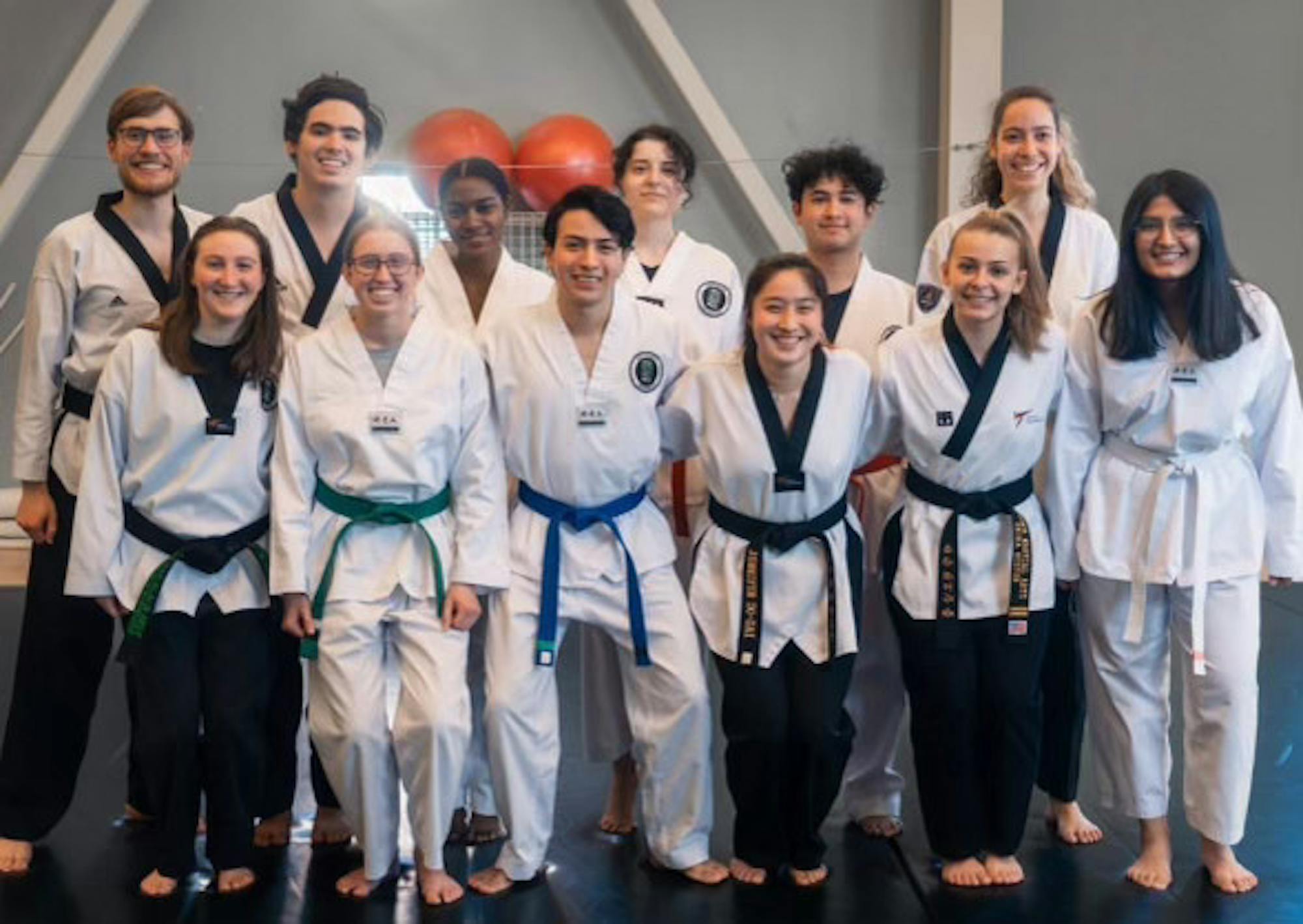From Feb. 12-26, the Dartmouth College Athletics and Recreations department will host the Dartmouth Club Sports Challenge to collect donations to fund club sports, according to J.B. Weber, senior associate athletic director for physical education and recreation. According to the Dartmouth Sports website, there are over 35 different club sports organizations with 1,200 student participants each year. Leading up to challenge, some club sports leaders have expressed concerns about the equity and sufficiency of funding.
According to Dartmouth Powerlifting president Celeste Ulicki ’24, the club does not receive substantial funding from the College. Ulicki explained that in order to fundraise, athletes spend five 10-hour weekends fundraising to cover a majority of their expenses.
“[In the] fall term, we run the concession stands at the football games, and we make about $2,000 from that,” Ulicki said. “Winter term, we volunteer at every one of the swim meets, where we make about $1,250.”
Along with her membership in Dartmouth Powerlifting, Ulicki also served as the Club Sports Board’s undergraduate finance committee representative during the 2022-23 academic year.
“Everything that we get from the College we’re super grateful for, but I think there is a huge onus on athletes to also financially fund their clubs,” Ulicki said.
Weber said that DCARD works to allocate the funds that they have as “equitably as possible.” According to Weber, there are four sources of club sports funding: subvention from the College, the Undergraduate Finance Committee, membership dues and fundraising. Less UFC funding is allocated to the clubs that “receive large donations,” yet transportation costs are covered for all club sports, he said.
“All transportation is paid for out of the club sport’s general account,” Weber said. “The reason we do that is safety related, so we can make sure that there is a minimum standard for transportation.”
The Dartmouth Club Sports Challenge aims to collect donations from Dartmouth alumni and parents to help fund club sports. According to Weber, DCARD will “match funds raised by the club sports teams” in the upcoming challenge.
However, Ulicki said she was concerned that the system in which DCARD has matched funds in the past is “not exactly equitable.”
“The part that’s really frustrating about it is they match the funds on a timely basis,” she said. “It’s first-come-first-serve, so at least last year, within the first half an hour, all of the available match funds of $40,000 had been claimed. We [Powerlifting club] couldn’t get all of our donations matched.”
According to Ulicki, DCARD has matched donations up to $5,000 in past years. Of the matched donations, most are taken by larger teams with “stronger alumni bases.”
“$17,000 of these funds [$40,000] I think went to the triathlon team,” she said.
Club Taekwondo senior captain Ryan Dudak ’24 said that the College’s funding paired with student fundraising is sufficient in covering their club’s expenses.
“We get $2,000 from club sports at the end of every academic year,” Dudak said. “That, along with our fundraising, tends to cover tournament fees, gear, uniforms or anything else we might need.”
According to Dudak, club Taekwondo fundraising consists of scanning tickets at football games and running concessions at women’s basketball games to help raise funds for the club. In addition, club Taekwondo receives “a couple 100 dollars” a year in donations and has one donor who donates “several 1000 dollars every couple of years.”
Women’s club water polo captain Kaitlyn Schettler ’25 said that the team’s funding also comes from a combination of College funds and donations.
“Normally, we have one of the highest amounts of donations out of the clubs — mostly from family members and alumni,” she said.
In addition to fundraising, donations and funding from the College, most club sports require their members to pay dues each term, according to Weber. Some club sports, such as Powerlifting, require higher dues to pay for club related expenses, according to Ulicki.
“Our dues are $60,” she said. “We have to pay to rent the College’s varsity facilities, we have to buy singlets for people and there is all sorts of extraneous stuff.”
According to Weber, students who have demonstrated financial need can apply for aid through the club sports coordinator.
“If you qualify for financial aid, based on the financial aid office, your dues will be covered,” Weber said.
According to Weber, a “generous donor” designates their donation to financial aid for students participating in club sports every year.
“There are some cases where clubs are financially solvent enough that they don’t need to collect dues from everybody,” Weber said. “So they’ll waive the dues from somebody who has a demonstrated financial need.”
Despite the multitude of ways to collect funding, some clubs still find it difficult to cover all of their expenses. Dudak explained that she knows of some club sport groups with debt that have to “micromanage” every dollar to maintain operations.
“For a school that prides itself on having an athletic student body, it just seems like there’s so many hoops you have to jump through if you’re not a varsity athlete,” Ulicki added.




